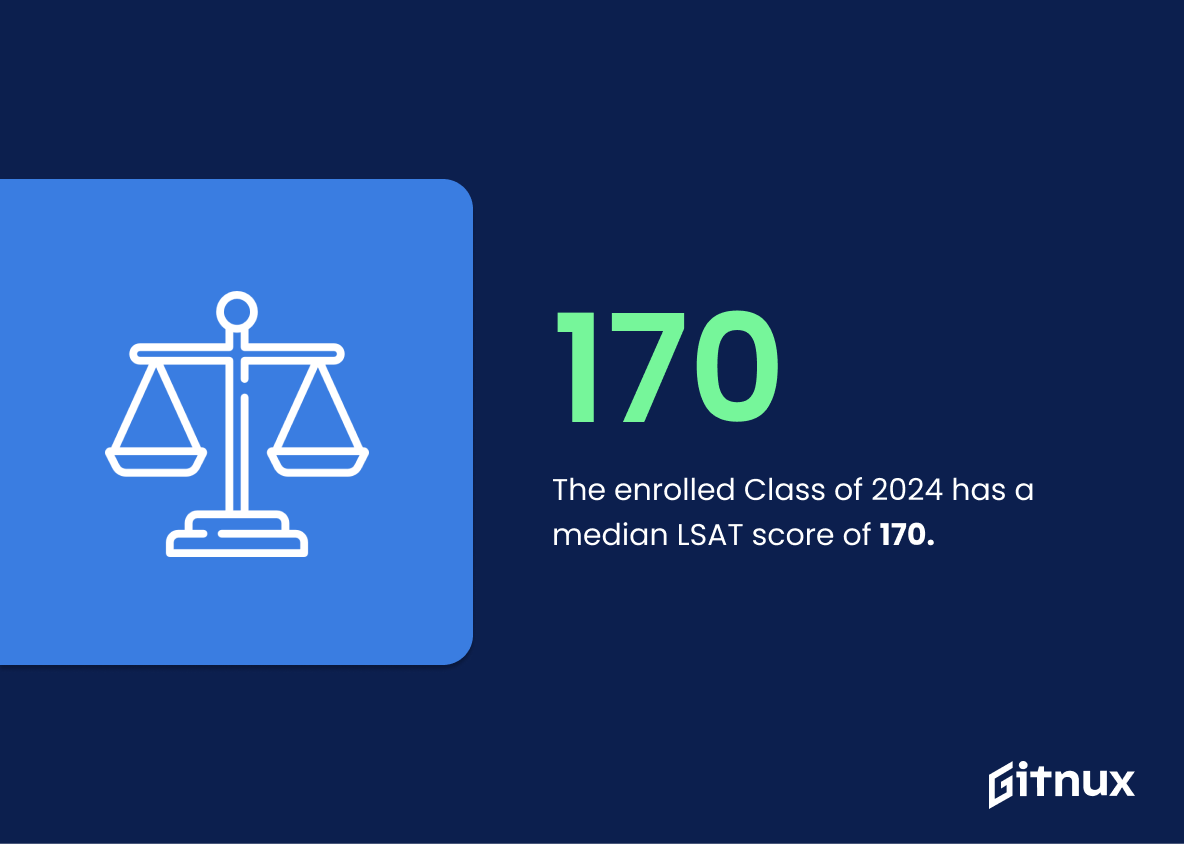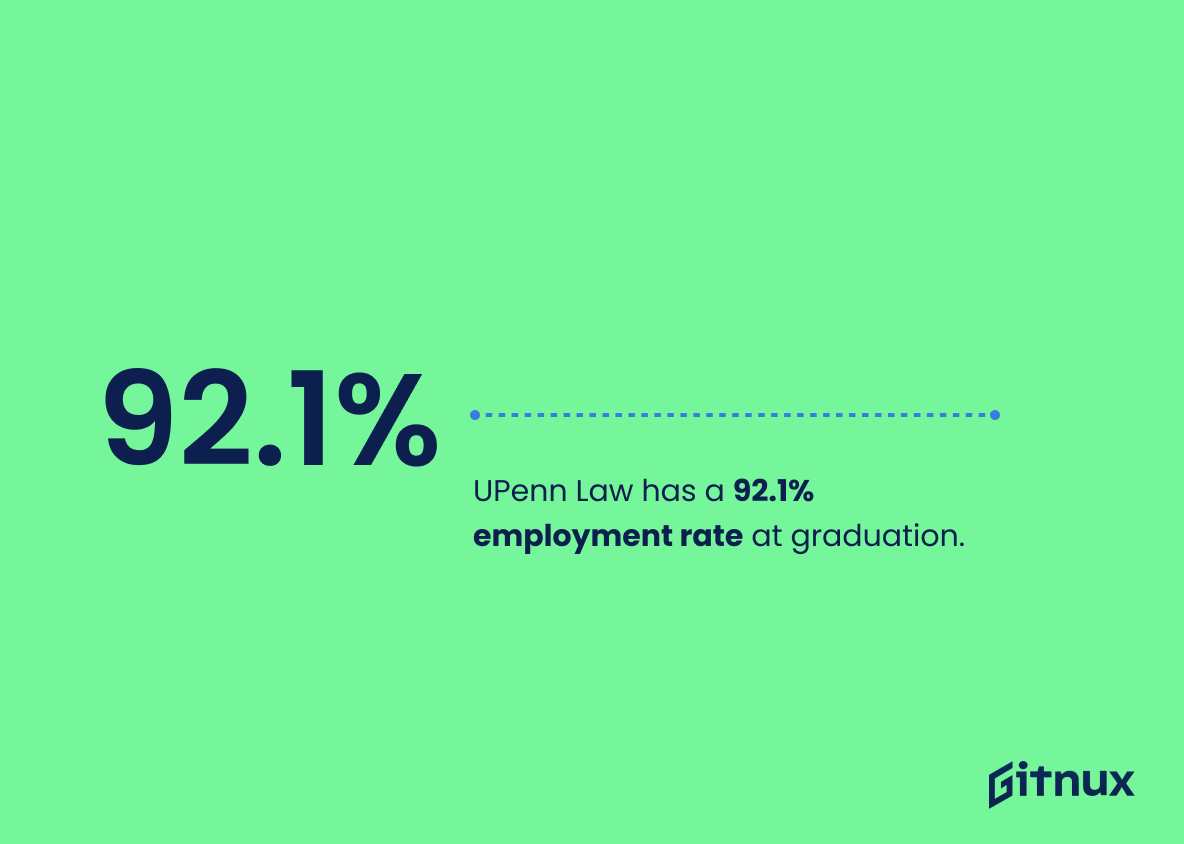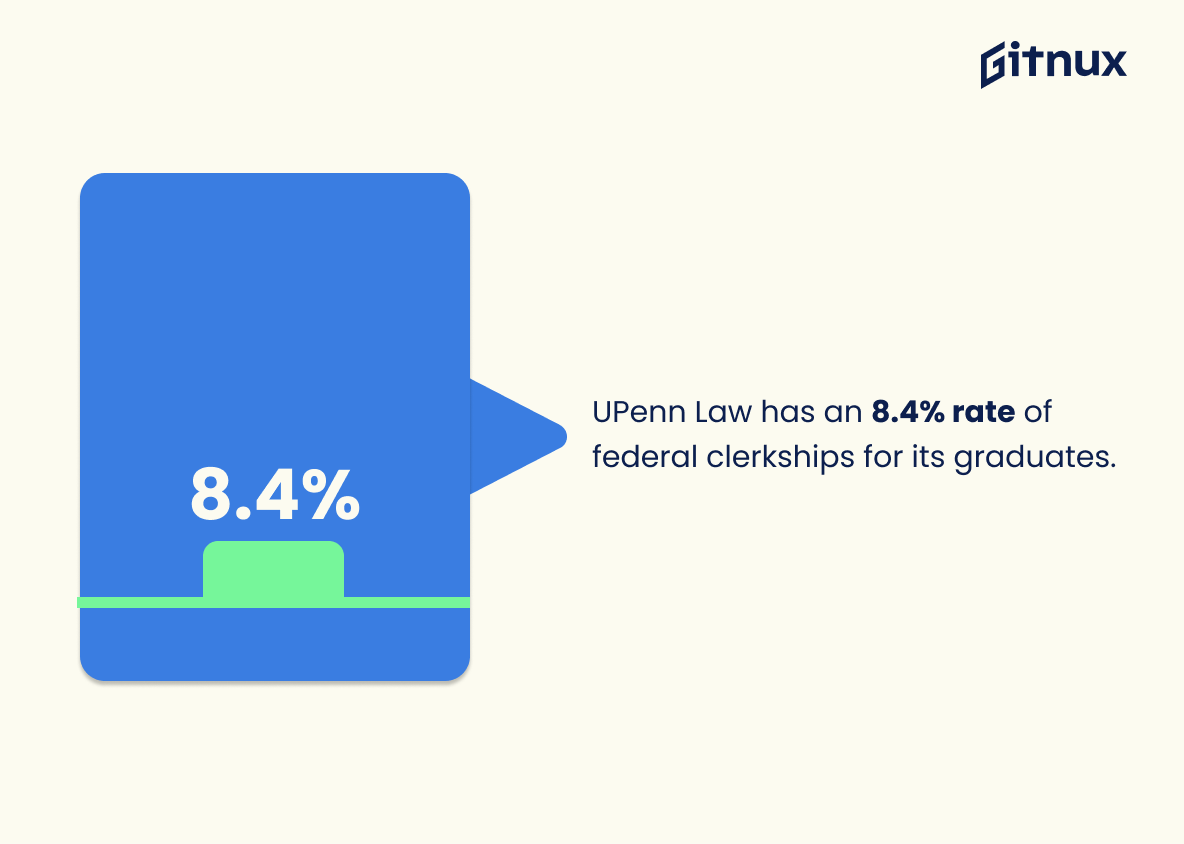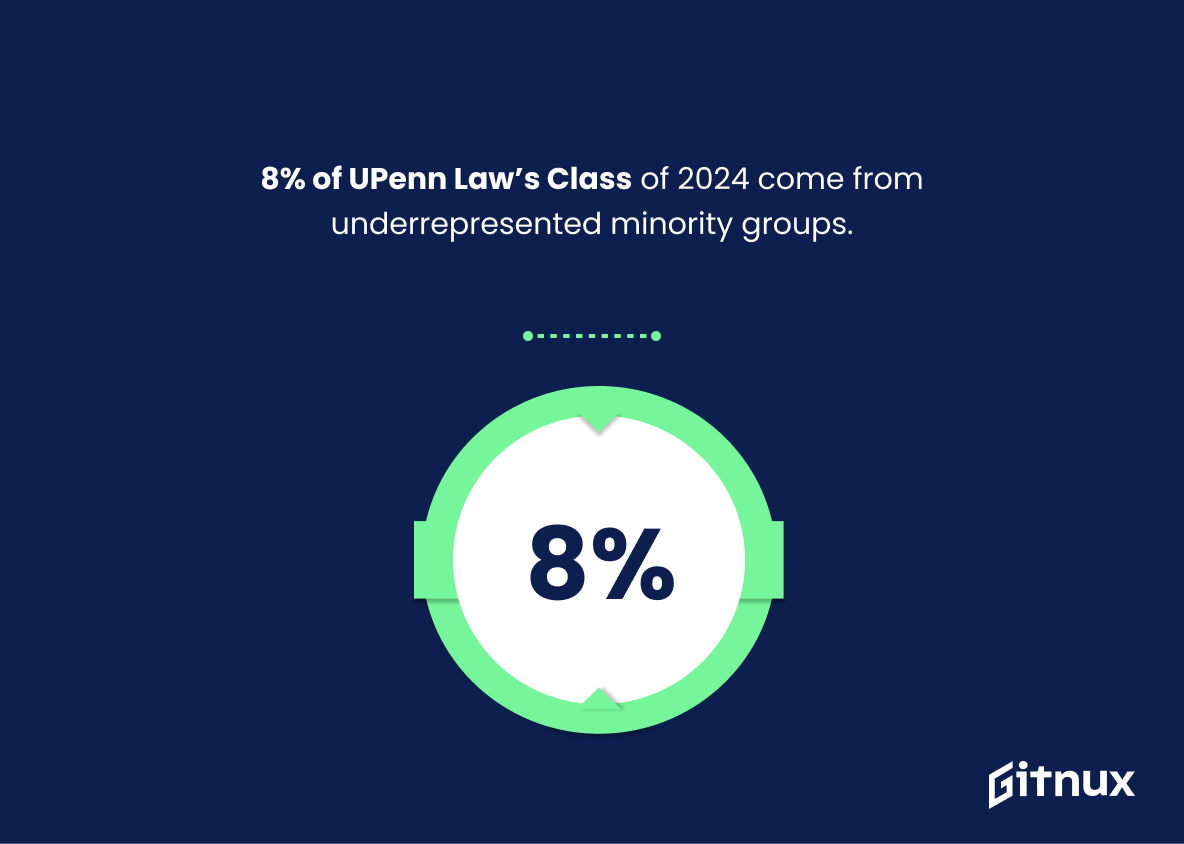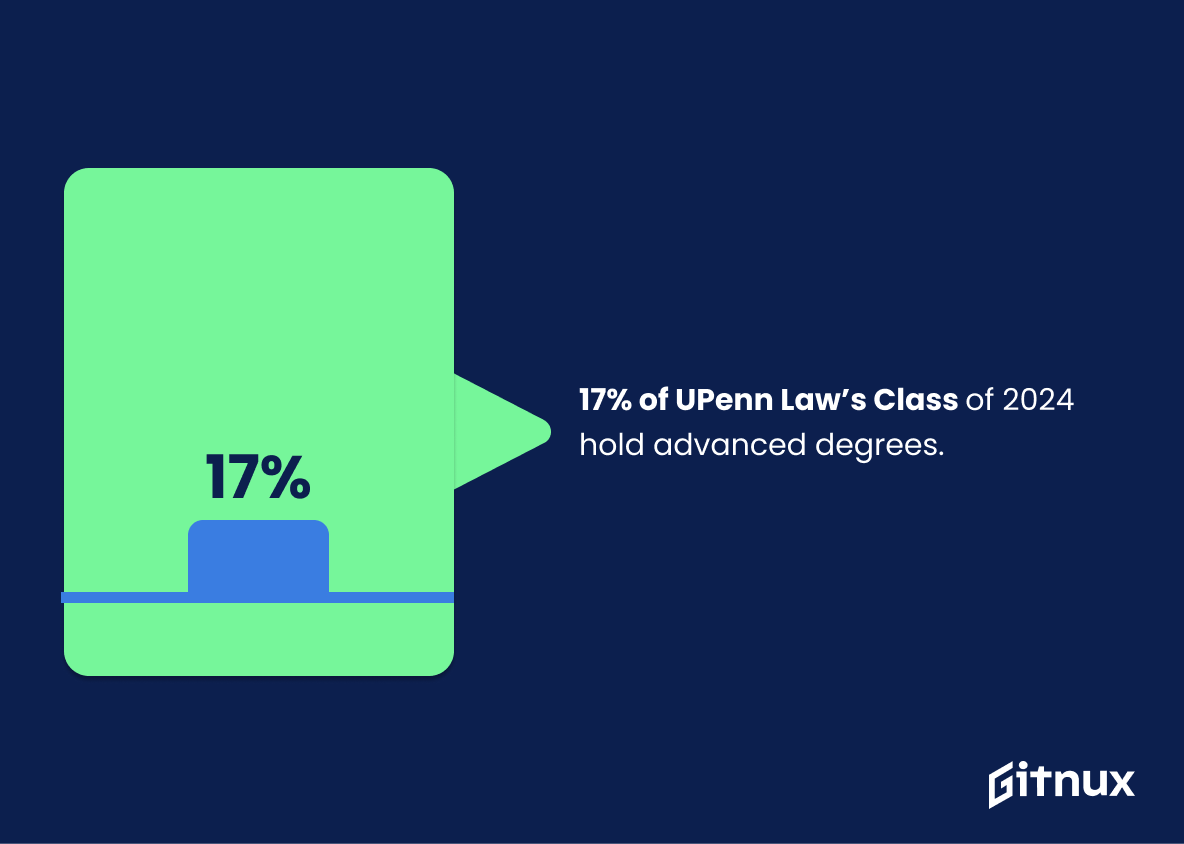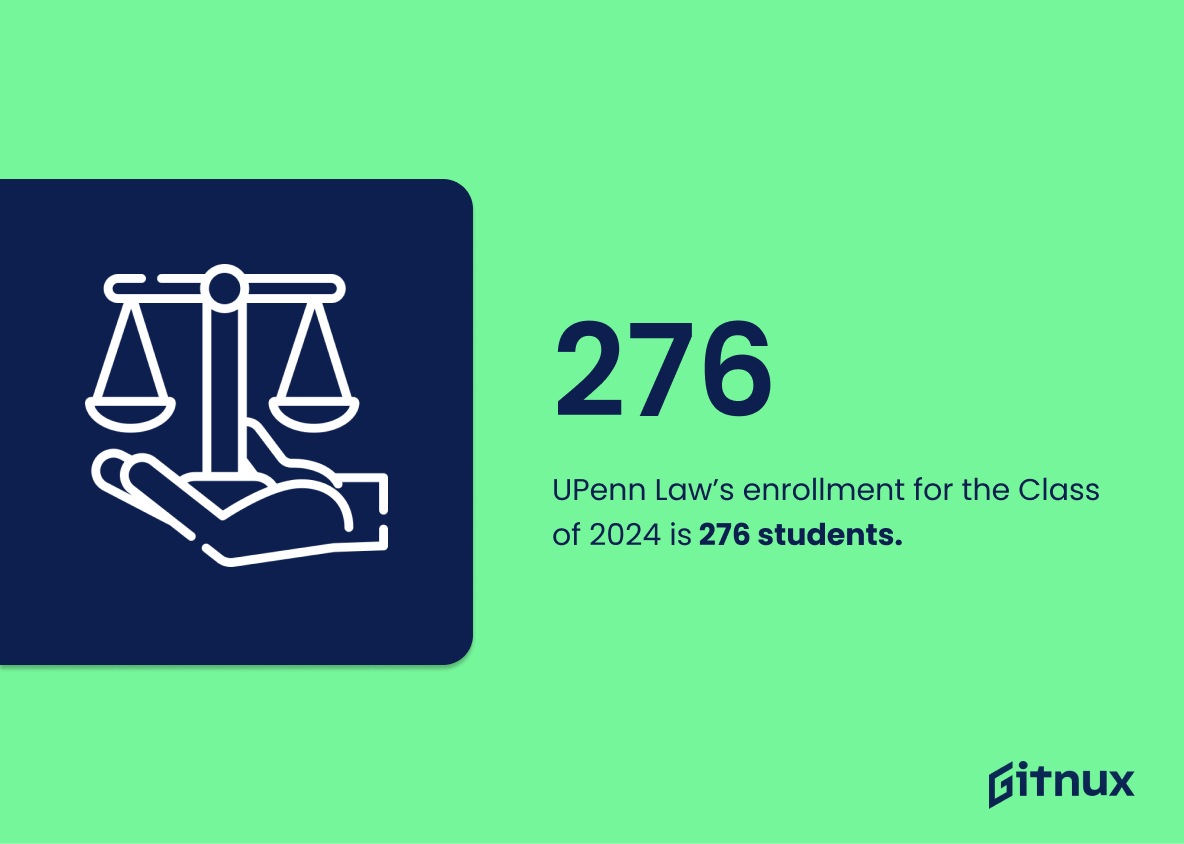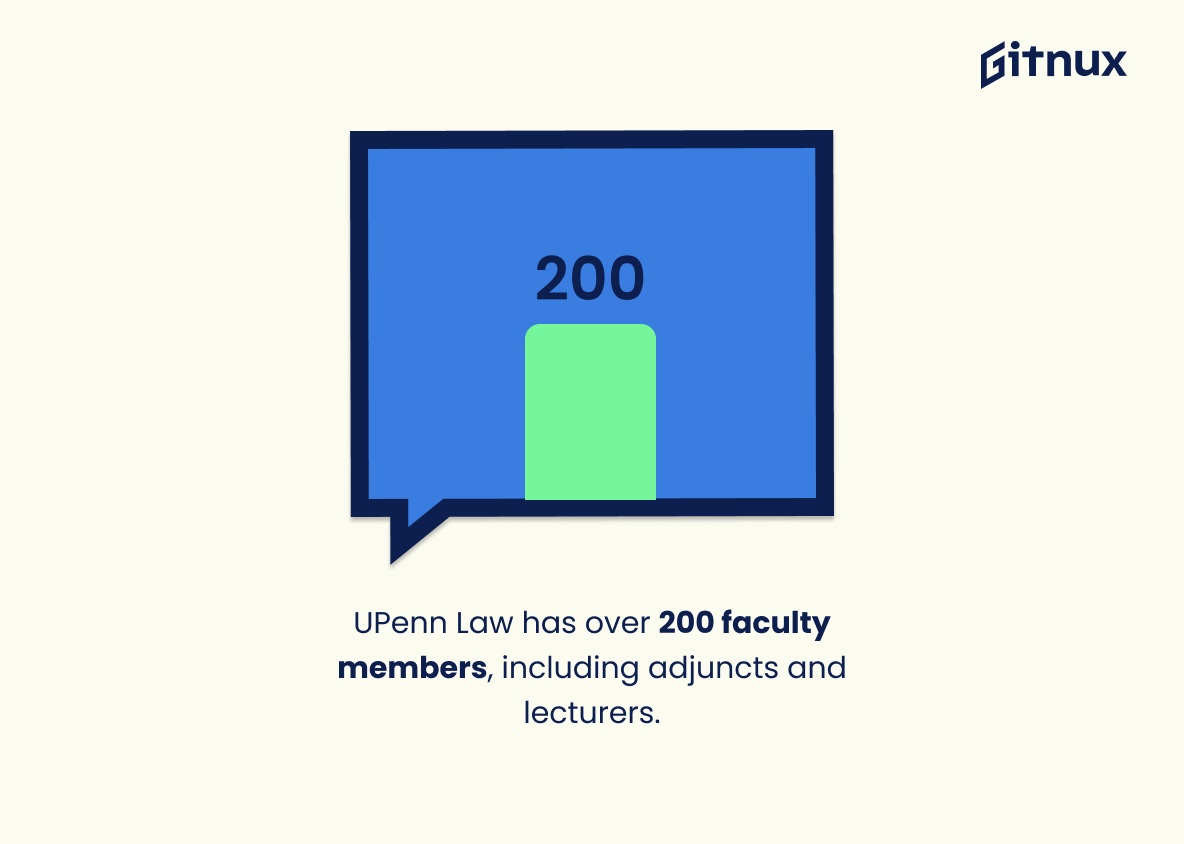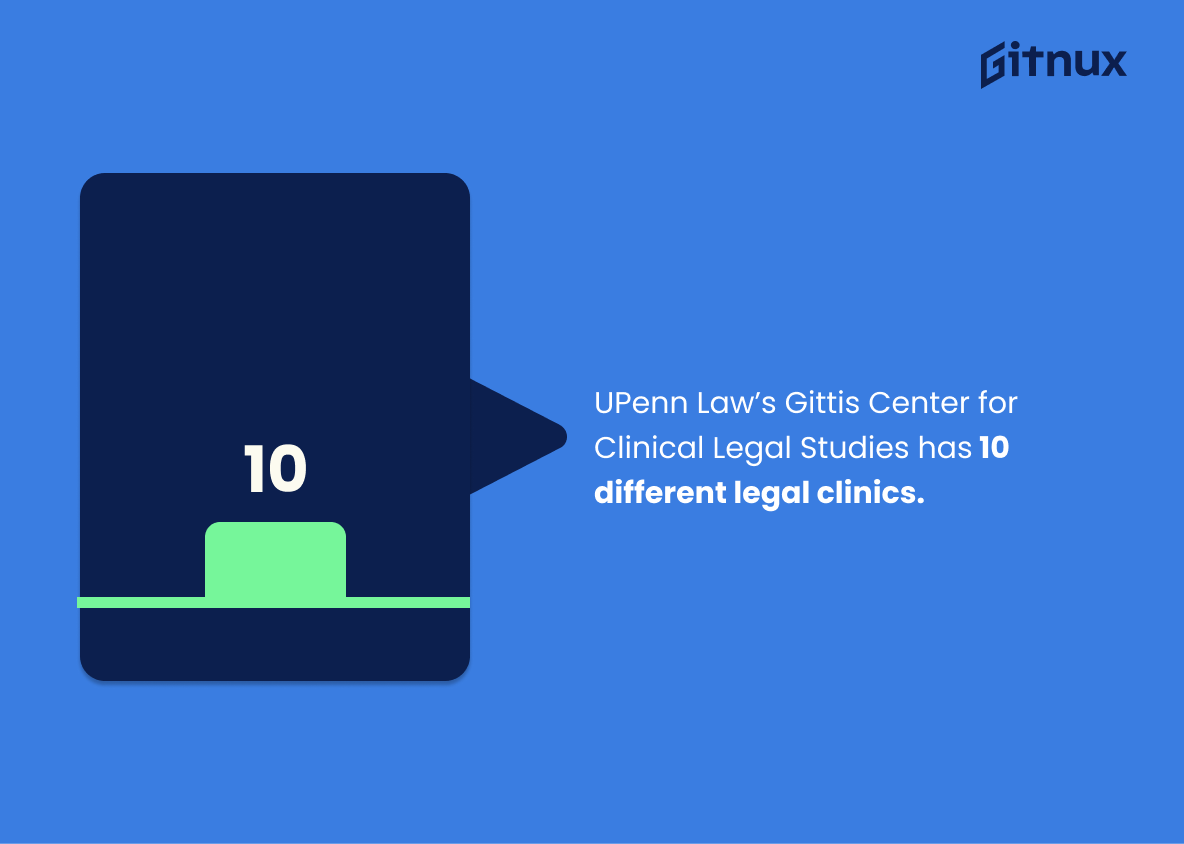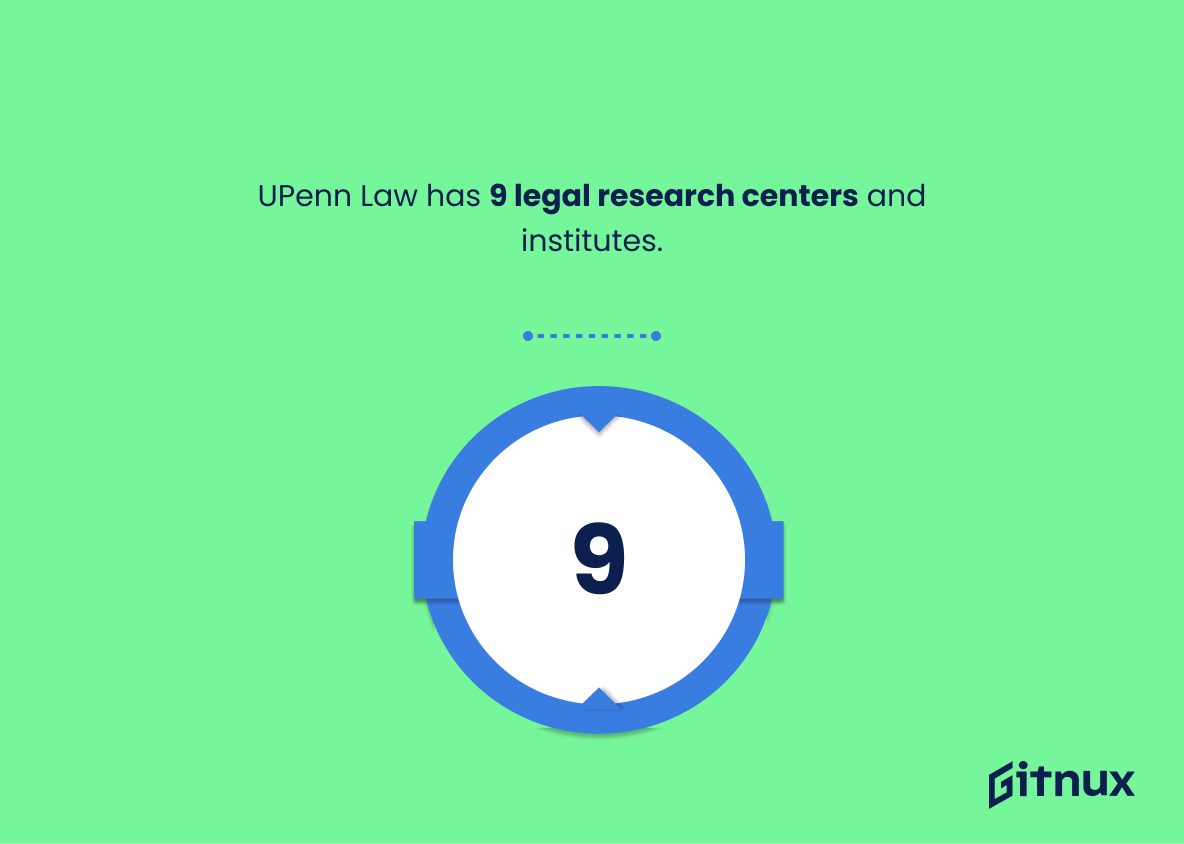The University of Pennsylvania Law School (UPenn Law) is one of the most prestigious law schools in the United States. For its Class of 2024, UPenn Law received 6,049 applications and had an acceptance rate of 16.25%. The enrolled class has a median LSAT score of 170 and a median undergraduate GPA of 3.88. According to U.S News & World Report rankings, UPenn Law ranks 7th among all law schools in the US with 92% employment at graduation and 8% federal clerkships for graduates. Additionally, 8% are from underrepresented minority groups while 49% are female students; 69% come from outside Pennsylvania and 17%, on average 24 years old, hold advanced degrees already when admitted into this program which enrolls 276 students total each year who can choose between more than 350 courses offered by over 200 faculty members including adjuncts or lecturers as well as 10 legal clinics provided by Gittis Center for Clinical Legal Studies plus 9 research centers/institutes available since 1850 when it was founded followed by Silverman Hall construction completed in 1900 – making it one hundred twenty years ago.
Upenn Law Admissions Statistics Overview
The enrolled Class of 2024 has a median LSAT score of 170.
This statistic is a key indicator of the caliber of the incoming Class of 2024 at Upenn Law. A median LSAT score of 170 is a testament to the academic excellence of the students enrolled, and speaks to the quality of the education they will receive.
The enrolled Class of 2024 has a median undergraduate GPA of 3.88.
This statistic is indicative of the caliber of students that Upenn Law is attracting. With a median undergraduate GPA of 3.88, it is clear that the Class of 2024 is comprised of highly accomplished individuals who have achieved academic excellence.
UPenn Law has a 92.1% employment rate at graduation.
The impressive 92.1% employment rate at graduation for UPenn Law speaks volumes about the quality of the program and its ability to prepare students for success in the legal field. This statistic is a testament to the school’s commitment to providing students with the necessary skills and knowledge to excel in their chosen profession. It is a clear indication that UPenn Law is a top-tier institution and a great choice for those looking to pursue a career in law.
UPenn Law has an 8.4% rate of federal clerkships for its graduates.
The 8.4% rate of federal clerkships for UPenn Law graduates speaks volumes about the quality of the school’s legal education. It demonstrates that the school is producing graduates who are highly sought after by the federal judiciary, and that the school is providing its students with the skills and knowledge necessary to excel in the legal profession. This statistic is a testament to the caliber of UPenn Law’s admissions process and the quality of its faculty.
8% of UPenn Law’s Class of 2024 come from underrepresented minority groups.
This statistic is indicative of UPenn Law’s commitment to fostering a diverse and inclusive environment. It speaks to the school’s dedication to providing equitable opportunities to students from all backgrounds, and its efforts to create a student body that reflects the diversity of the world we live in.
49% of UPenn Law’s Class of 2024 are female.
This statistic is indicative of UPenn Law’s commitment to gender equality and inclusivity. It demonstrates that the school is actively working to create a diverse and equitable learning environment for its students. This is an important factor to consider when evaluating the school’s admissions process and overall academic environment.
69% of UPenn Law’s Class of 2024 are from outside of Pennsylvania.
This statistic is indicative of the diversity of UPenn Law’s Class of 2024, demonstrating that the school is drawing students from a wide range of backgrounds and locations. It speaks to the school’s ability to attract top talent from across the country, and shows that UPenn Law is a destination for students from all over the United States.
UPenn Law offers joint degree programs in collaboration with other graduate schools at the University of Pennsylvania.
The fact that UPenn Law offers joint degree programs in collaboration with other graduate schools at the University of Pennsylvania is a testament to the school’s commitment to providing students with a comprehensive education. This means that students can take advantage of the resources and expertise of multiple departments, allowing them to gain a more well-rounded understanding of their chosen field. This is an important factor to consider when researching UPenn Law Admissions Statistics, as it demonstrates the school’s dedication to providing students with the best possible education.
17% of UPenn Law’s Class of 2024 hold advanced degrees.
The statistic that 17% of UPenn Law’s Class of 2024 hold advanced degrees is indicative of the caliber of students that the school is attracting. It speaks to the quality of the school’s admissions process and the academic excellence of the students it is able to bring in. This is a testament to the school’s commitment to providing a top-notch legal education to its students.
The average age of students admitted to UPenn Law is 24 years old.
This statistic is indicative of the fact that UPenn Law is a school that values young, ambitious minds. It shows that the school is looking for students who are eager to learn and grow in their legal career. This statistic also speaks to the school’s commitment to providing a diverse student body, as it shows that UPenn Law is open to students of all ages and backgrounds.
UPenn Law’s enrollment for the Class of 2024 is 276 students.
This statistic is a testament to the prestige of UPenn Law, as it shows that the school is able to attract a large number of students to its program. It also indicates that the school is able to maintain a high level of quality in its admissions process, as it is able to select a small number of students from a large pool of applicants. This statistic is a reflection of the school’s commitment to excellence and its ability to provide a top-notch legal education.
UPenn Law has over 200 faculty members, including adjuncts and lecturers.
The sheer number of faculty members at UPenn Law speaks volumes about the quality of education and resources available to students. With over 200 faculty members, including adjuncts and lecturers, UPenn Law is able to provide students with a wealth of knowledge and experience to draw from. This is an invaluable asset for any aspiring law student.
UPenn Law offers more than 350 courses in total.
The sheer number of courses offered by UPenn Law speaks volumes about the school’s commitment to providing students with a comprehensive education. With more than 350 courses to choose from, students can explore a wide range of topics and hone their legal skills. This breadth of offerings is a major draw for prospective students, and is a key factor in UPenn Law’s impressive admissions statistics.
UPenn Law’s Gittis Center for Clinical Legal Studies has 10 different legal clinics.
The fact that UPenn Law’s Gittis Center for Clinical Legal Studies has 10 different legal clinics is a testament to the school’s commitment to providing students with a comprehensive legal education. Not only do students have access to the latest legal theories and practices, but they also have the opportunity to gain hands-on experience in a variety of legal settings. This is an invaluable asset for any aspiring lawyer, and it is a major factor in why UPenn Law is one of the top law schools in the country.
UPenn Law has 9 legal research centers and institutes.
The fact that UPenn Law has 9 legal research centers and institutes speaks volumes about the caliber of the school. It demonstrates that UPenn Law is a leader in legal research and provides students with the opportunity to engage in cutting-edge research. This is an important factor to consider when looking at UPenn Law Admissions Statistics, as it shows that the school is committed to providing students with the best possible education.
The University of Pennsylvania Law School was founded in 1850.
The founding of the University of Pennsylvania Law School in 1850 is a significant milestone in the history of legal education. It is a testament to the school’s commitment to excellence and its dedication to providing students with the best possible legal education. This is an important factor to consider when looking at Upenn Law Admissions Statistics, as it demonstrates the school’s long-standing commitment to providing quality legal education.
UPenn Law’s Silverman Hall, its main academic building, was constructed in 1900.
The fact that Silverman Hall, UPenn Law’s main academic building, was constructed in 1900 speaks volumes about the school’s long-standing commitment to excellence in legal education. This is a testament to the school’s dedication to providing students with the best possible resources and opportunities for success. It is also a reminder of the school’s rich history and its place as one of the most prestigious law schools in the country.
Conclusion
The University of Pennsylvania Law School is a prestigious institution with an impressive history. It has over 6,000 applications for the Class of 2024 and an acceptance rate of 16.25%. The enrolled class boasts a median LSAT score of 170 and undergraduate GPA of 3.88, both among the highest in the nation. UPenn Law ranks 7th according to U.S News & World Report and offers joint degree programs with other graduate schools at Penn as well as more than 350 courses overall including 10 legal clinics through its Gittis Center for Clinical Legal Studies and 9 research centers/institutes across campus. Additionally, 8% come from underrepresented minority groups while 49% are female; 69% are from outside Pennsylvania; 17% hold advanced degrees; 24 years old is the average age admitted students have when they enroll; 276 students make up this year’s incoming class; 200 faculty members teach here (including adjuncts/lecturers); Silverman Hall was constructed in 1900 making it one last century-old building on campus that houses UPenn Law’s main academic building today – all these facts point towards why UPenn Law remains one of America’s top law schools even after being founded back in 1850.
References
0. – https://www.law.upenn.edu
1. – https://www.ilrg.com
2. – https://www.lstreports.com
